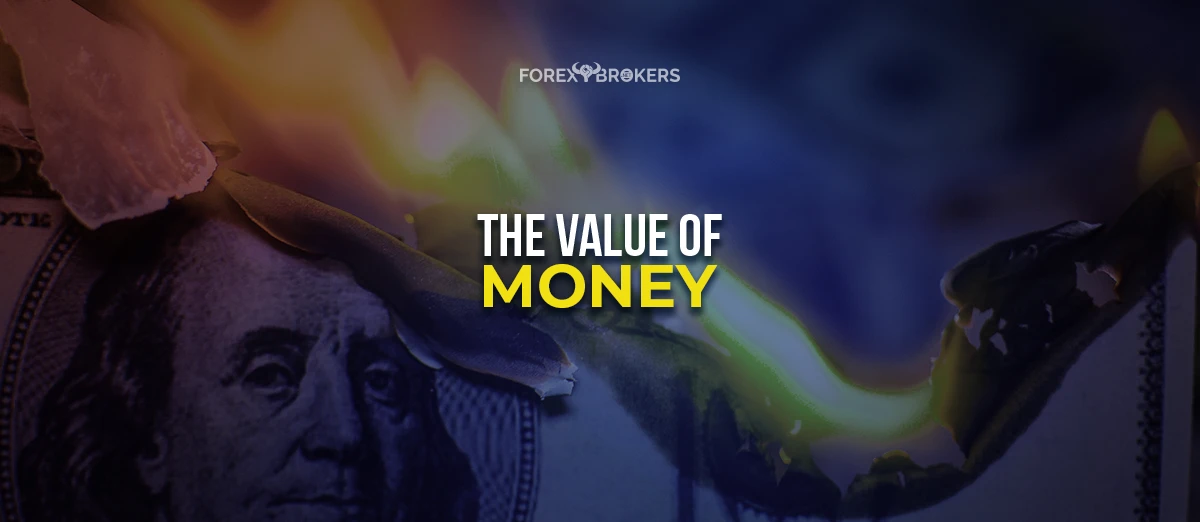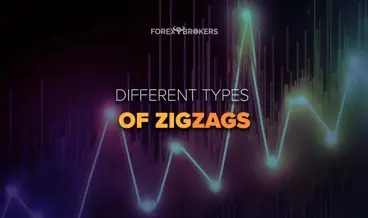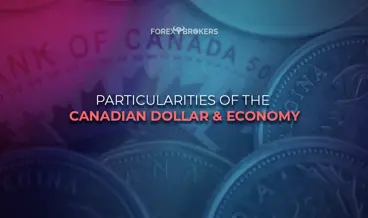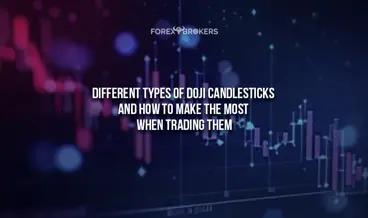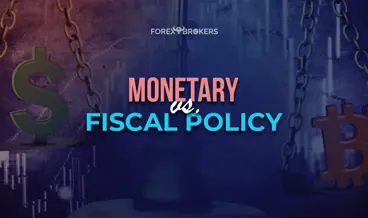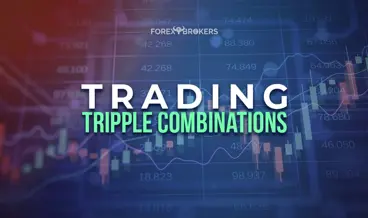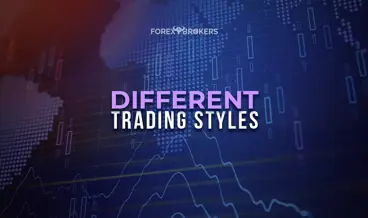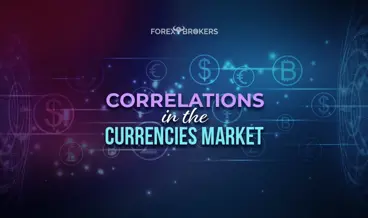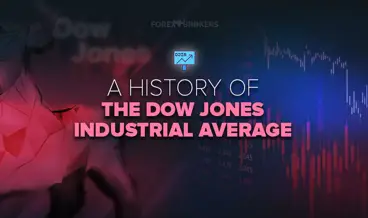The 2020 COVID-19 pandemic led major central banks to continue their excessive money printing. On top of that, governments expanded the fiscal policy to lengths never seen in recent history. Helicopter money, a concept viewed as very dangerous because of its inflationary repercussions, was used in many countries. The United States, for instance, sent checks to every individual while the country was battling the pandemic, and jobs were lost.
The danger of excessive printing and helicopter money is that inflation can no longer be controlled. We have already seen some signs of excessive inflation to come, but central banks are confident that they can handle higher levels of inflation should it come.
This article will cover a short history of money and inflation and what happened with the world after the Bretton Woods agreement. Also, we will cover different types of inflation, as the title of the article suggests, as well as how the central banks’ reactions to different crises led people to believe that inflation is just around the corner.
As such, amid fears of losing money value rapidly, many investors ventured into other assets, like digital currencies (e.g., Bitcoin) or gold. Commodities of all kinds are known as offering a hedge or protecting against inflation, and this is one of the attributes investors appreciate.
Finally, we will look at how inflation is measured in the twenty-first century, the dangers ahead, and the challenges for central banks in the years to come.

Short History of Money and Inflation
In the World War II aftermath, the world’s representatives met in Bretton Woods, United States, with a clear mandate – to set a new world financial order. One of the outcomes of the symposium was the gold standard. Effectively, the rate of the US dollar was pegged to the price of gold.
More precisely, for each dollar bill circulating, the central bank held a certain quantity of gold in its vaults. For this reason, many at that time used to say that the US dollar was as good as gold.
The gold standard was held until the 70s. Nations around the world used a similar approach to their currencies, so the money supply in the economy was controlled and backed by gold.
The “Nixon Shock” in the 1970s took everyone by surprise. The United States, facing huge deficits due to the Vietnam War, decided to drop the gold standard. In other words, its central bank, the Federal Reserve, could issue as many dollars as it wanted without being forced to back the money supply by gold in its vaults.
As it turned out, it was a question of trust. The world watched in awe to see how the dollar would act in the international markets – but it held well, as other nations were willing to divert part of their excess reserves into a foreign currency.
In the years to follow, slowly but surely, almost all countries dropped their own gold standard in one way or another. The dropping of the gold standard marked the start of free-floating currencies. Or what we know today as the Foreign Exchange Market – Forex.
The Gold Standard, Fiat Money and Inflation
Prior to the Bretton Woods agreement, gold was the basis for a previous gold standard – one that existed between 1871 and 1914. It ended abruptly with the start of World War I, but the decades during which the gold standard existed were known as the most prosperous and peaceful in history.
Perhaps it is surprising that we start talking about gold in an article dedicated to concepts about inflation, but gold is the anchor of inflation. One of the main attributes of its more than 5,000-year history is that it represents a store of value.
To this day, this is the main characteristic of gold and the main reason why small and large investors add it to their portfolios. Throughout history, gold has been protected against inflation, which is why endowments (i.e., large, long-term institutional investors) favor investments in commodities, especially gold.
The value of money, therefore, depends on a lot of things. For instance, governments can easily debase their currency with the aim of making local products more competitive on foreign markets.
Governments have higher credibility when borrowing from international financial markets if they do so in the local currency. The answer comes from the fact that besides taxation, a country can effectively print as much money as it wants to pay debt.
Consider 2020 and the COVID-19 pandemic. When it hit the Western world, the financial markets collapsed. Stocks dropped in March like never before, reaching a bear market in record time. What did the US government do? It offered fiscal stimulus. What did the Fed (the central bank acts as a bank to the government) do? It printed dollars. It did it so aggressively that more than 20% (!) of all dollars ever created appeared after March 2020.
Fiat Currencies After 1971
This brings us to another concept related to inflation – the power of governments to debase their currencies. This is far easier to do than follow strict economic principles to achieve growth. Instead, building on debt and rolling the existing one for future generations often goes unnoticed.
Under the gold standard in place until 1971, all national currencies were valued in relation to the US dollar. Therefore, the US dollar became the world’s reserve currency and was convertible to gold at a fixed rate ($35/ounce).
By severing the link to gold, Nixon effectively “freed” the US dollar. And so the era of fiat money began, with many of the inflation-related principles that we are familiar with today having their roots back in 1971.
History tells us a cruel reality – no fiat currency has survived the test of time. For a fiat currency to be called money, it must fulfill numerous functions, such as being a unit of account and a store of value, among others.
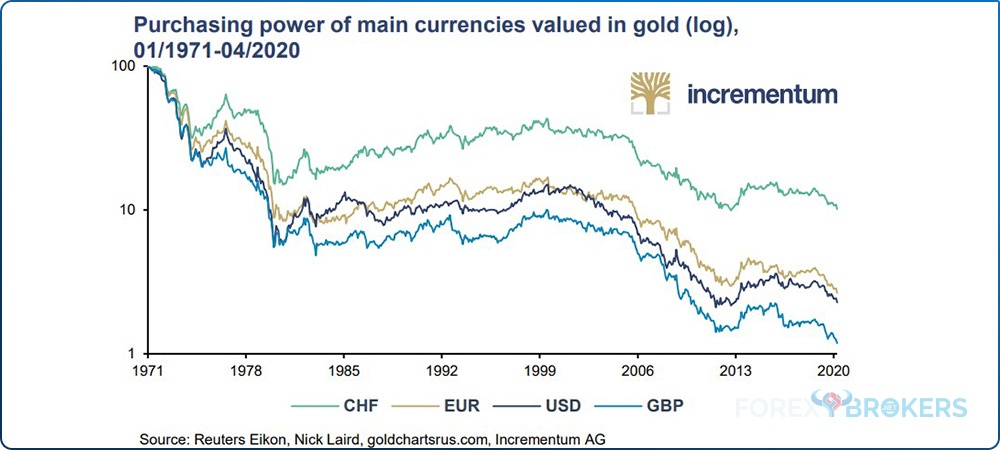
The chart above states that no fiat currencies kept their value over time. Not even the Swiss franc (CHF) was able to keep its value intact when compared to, in this case, gold.
Later in the article, we will return to gold and how it acts as a hedge against inflation. Also, we will cover other assets that have a similar purpose.
What Is Inflation?
Inflation refers to the change in the price of goods and services over a predetermined period of time. The big issue with inflation is which goods and services are monitored to measure inflation. Because not all goods and services are included in the way governments calculate inflation, the day-to-day reality may show higher inflation. In contrast, the official inflation numbers may show little or no inflation.
For example, consider education. It is increasingly expensive and rising every year. However, the changes in the price of educational services are not included in inflation.
Also, consider transportation and, in some cases, food prices. Most indices that calculate inflation are not included because energy prices are volatile and, according to officials, they distort data. However, transportation and education are part of the day-to-day life of people; hence, we cannot ignore them. Therefore, some issues with the way inflation is measured do exist, but not with its definition.
A more precise definition of inflation is that it represents a sustained rise in the level of prices. Therefore, it is not about all changes in the prices of goods and services in a defined period but about a sustained (i.e., gradual) rise. If inflation rises too quickly, it leads to hyperinflation. If it falls gradually, it leads to disinflation. Finally, if it falls faster and below zero, it becomes deflation.
Inflation in Relation to Other Economic Indicators
Economists agree that a certain level of inflation is good for economic growth. Stable inflation, or price stability as central banks like to call it, is desired.
The idea is that if the prices of goods and services rise moderately, economic activity is stimulated because consumers will spend faster – due to the fear that the goods and services will cost more in the future. Naturally, the catch is to find or define a level of inflation that is neither too high nor too low to hurt the economy. It appears that the developed world’s consensus is 2%. However, even that definition has been challenged lately by the developments caused by the COVID-19 pandemic.
The best way to understand inflation is to consider that it goes up and down with the business cycle. Later in this academy, we will cover the fundamental concepts of the business cycle and how they help identify periods of expansion, boom, recession, etc. We will also cover the indicators that help to identify the various stages of the economic cycle.
Coming back to inflation, the theory of the business cycle tells us that while inflation is pro-cyclical, it tends to lag the different phases by a year or so. What does this mean?
It means that if the economy recovers from a recession and a new expansionary cycle begins, inflation will start picking up only after one year or so. Think of the COVID-19 recession – when inflation is seen rising from the lows, the expansionary cycle (hence, the recession) may have already started for quite a while. That would automatically trigger new positions in the stock market as traders late to the party will want to join the new economic cycle.
Different Types of Inflation
A simpler way to look at inflation is that the same amount of money will buy you fewer goods and services over time. That is because inflation means a sustained rise in prices.
Because of that, it is important to calculate the inflation rate or the percentage points in the change of prices of goods and services. The inflation rate serves an important purpose; it helps distinguish between different types of inflation.
There are different ways to calculate the inflation rate – based on the change in a consumer price index, personal consumption expenditure, or simply by using the Gross Domestic Product (GDP) deflator over a period of time. In the following sections, we will cover different types of inflation – cost-push inflation, demand-pull inflation, disinflation, hyperinflation, deflation and stagflation. Note that not all of them are literally types of “inflation”, as some reflect declines in prices. However, they are phenomena derived from inflation, and thus, we cannot ignore them.
Cost-Push Inflation
More often than not, businesses are forced to raise prices. When this happens, it is usually the rise in costs that forces them to do so. Of all the costs that force businesses to raise their prices, wages are dominant.
Excessive demand creates cost-push inflation and the first areas to be seen are the labor and commodity prices. Traders and investors also monitor the producer price indices to see when and if inflation is rising on the producers' side. When this happens, producers typically pass the rise in prices to consumers via businesses raising their prices as their costs increase.
Demand-Pull Inflation?
In sharp contrast with cost-push, demand-pull inflation is driven by the rise in demand, just as the name suggests. It all comes down to industrial capacity utilization and the definition of GDP. More precisely, the difference between the actual and the potential real GDP.
In the case of demand-pull inflation, all prices are rising due to the general rise in demand. As such, the more the economy operates above its potential, the more supply pressure there will be and the higher the inflation will go. The opposite is true as well, and that leads to deflation.
Disinflation
Earlier in the article, we defined inflation as a sustained rise in the price of goods and services. How about a sustained decline in the price of goods and services? In economic terms, such a phenomenon is referred to as disinflation.
For instance, please assume that the inflation rate is 8% and declines to 5%. While it remains positive, it is called disinflation. Therefore, the key here is that inflation declines but remains positive. This is a crucial concept that differentiates disinflation from outright deflation, and the two are being fought differently by central banks. When inflation exceeds the central bank’s target, the bank raises the official rate as much as needed to counter higher inflation. As such, inflation falls, but the aim is for it to remain positive, close to the 2% or so target. While this is happening, central banks respond to the phenomenon known as disinflation.
Hyperinflation
Hyperinflation corresponds to an extremely fast increase in the inflation rate. We do not talk here about increases of 10% or 20%, but 600% or even above 1000% per year.
Basically, during hyperinflation, money as we know it dies. Throughout history, there are plenty of examples of money ceasing to be a store of value. In some cases, it happened overnight. In others, it took several years for the money to literally lose all of its purchasing power.
Think of the rampant inflation in Germany during the Weimar Republic in the 1920s. Or, nowadays, think of Venezuela – a country rich in oil resources but with a worthless local currency.
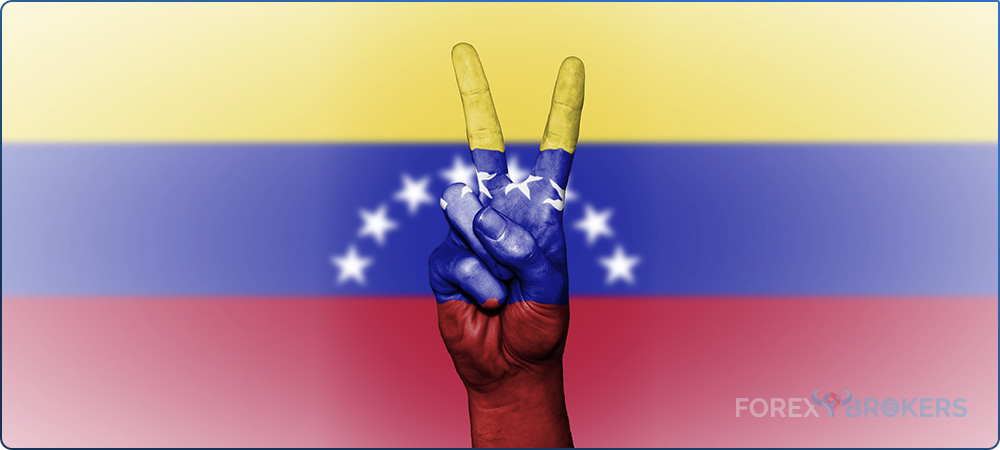
Other examples can be found in Argentina, Turkey, and some Middle East countries back in the day. Because of hyperinflation, and in order to protect their wealth, people lost faith in the government. This came at the expense of losing faith in the central bank, which, in fact, is the banker to the government. Hence, faith in money is lost as well, and without trust, the fiat currency cannot fulfill its function as a store of value.
Deflation
Deflation, also called a negative inflation rate, appears when inflation drops below zero. This is the phenomenon that all central banks in advanced economies fear the most. Emerging or frontier markets do not experience deflation for the simple reason that the inflation level in those countries is always on the rise, reaching much higher levels than in the developed world.
Fear of deflation leads to central banks switching to an inflation-targeting regime in the developed world. It all started with the Reserve Bank of New Zealand (RBNZ), as we pointed out in another part of this academy, and then gradually, most central banks adopted a framework based on reaching a certain level of inflation that is distant enough from the zero level as to avoid deflation.
Japan is the best example of how deflation grips an advanced economy. Over the past decades, the Bank of Japan (BOJ) could not generate inflation high enough to avoid the deflationary spiral that gripped the economy.
Stagflation
Stagflation is more of an economic phenomenon than a type of inflation. It is worth mentioning here because when stagflation appears in an economy, the monetary authorities typically do nothing. Yes, the economy is left to heal on its own.
But what is stagflation? Stagflation is referred to as the combination of high inflation, high unemployment, and low economic growth. The consensus is that no monetary policy decision in the short term can fight stagflation, and therefore, the central banks choose not to intervene.
Inflation as Part of Central Banks’ Mandates
We’ve already connected inflation to the central banks’ mandates. To avoid deflation, most central banks run a mandate centered around a certain level of inflation. Therefore, when inflation exceeds that level, the central bank acts by hiking the interest rate to steam off ramping inflation. On the other hand, when inflation drops below the target, central banks ease the monetary policy by cutting the rates to create inflation close to the target.
The key here is that the upside to raising rates is literally unbounded (e.g., a central bank can keep raising rates until inflation slows down and disinflation appears). In contrast, the downside to cutting rates is bounded by the lower boundary. For most central banks, the lower boundary is the zero level, although some major central banks ventured below this level in recent years, albeit with little or no success.
Inflation matters for the currency traders and not only because it triggers actions from central banks. Higher rates are bullish for the currency to a certain level. Lower rates are bearish for the currency.
Inflation and Price Stability
One of the concepts frequently misunderstood by market participants is the notion of price stability. Price stability refers to the central bank’s target. In some cases, as in the case of the European Central Bank, the target is fixed – below but close to 2%. For the ECB, this area, or the band, means price stability. To meet its objective, the ECB must find a way to generate inflation between 1.8% and 2%. Anything above is met with contractionary measures, while anything below is met with expansionary measures.
For the Reserve Bank of Australia (RBA), price stability means an inflation rate between 2% and 3%. The RBA fulfills its mandate when the inflation rate reaches that interval, or band.
Central Banks Shifting towards Average Inflation
In some other cases, price stability turned into something called AIT, or Average Inflation Targeting. The Fed in the United States announced in 2020 during the Jackson Hole Symposium that it would shift its mandate toward average inflation.
What this means is that the Fed left its 2% target behind and now aims for averaging inflation around that level to reach price stability. It also means that if inflation rises above the initial target of 2%, the Fed will not engage in contractionary monetary policies. Instead, it will wait until inflation averages 2% over a certain period. To this day, it is not clear how long this period will be, but the market participants are bound to find the answer by the time inflation shows its teeth.
Measures of Inflation
There are various measures of inflation, and this article has already mentioned some of them. Below, we will have a look at some that are already known among traders but also some that are unknown and may better explain the dynamics behind measuring the change in the prices of goods and services.
The best way to measure inflation is to use a price index – the average prices of a basket of goods and services. However, besides the price indexes listed and explained below, the GDP deflation also gives a pretty accurate picture of the inflation rate in the past year and how the prices of goods and services have changed.
The Consumer Price Index CPI
This is the metric to measure inflation in most countries. It represents a basket of goods and services but differs from country to country. More precisely, the weight of the goods and services in the basket differs.
For example, the CPI in Germany is called the HICP – Harmonized Index of Consumer Prices. The food and beverages category weighs 16.7% in the price index. In contrast, the same category weighs 25.9% in the Japanese CPI, 14.8% in the United States CPI-U, 47.1% in the Indian CPI, and 34% in the Chinese CPI. As the data shows, there are sharp differences between various CPIs worldwide, which matters when comparing data across countries.
Another thing to consider, which is extremely important in advanced economies, is the core data. Some countries, like the euro area, prefer to look at the Core CPI, which doesn’t account for transportation costs, for example, as they are considered too volatile and can distort data. All in all, the point here is that the CPI is the most common index to track inflation around the world.
The Personal Consumption Expenditure PCE
The United States also calculates a CPI, although it is called slightly different – the CPI-U. The U comes from urban, telling us that the CPI in the US only considers urban areas in tracking price changes.
Because of that, there is a complete metric used by traders and also by the Fed to measure inflation – the Personal Consumption Expenditure, or the PCE. This index covers all personal consumption in the United States and the Fed likes the core variant of it for the same reason as explained earlier.
Laspeyres, Paasche, Fisher
Most of the price indexes in the world have this name - Laspeyres. It suggests that the index's composition of goods and services remains constant over time. However, it is a common practice for the basket to be updated every five years. The problem with the Laspeyres indices (i.e., CPI indices) is that they suffer from various biases pointing to the upside – e.g., quality and substitution. To account for these biases, there are other types of indices.
Other types of indices allow solving for these biases, such as the Paasche and Fisher indices. They use so-called hedonic pricing to solve for the new product bias – another bias that tends to distort data.
How to Hedge against Inflation
Now that we have covered everything there is to know about inflation from a trader’s perspective, the time has come to shift the focus to ways to prevent inflation.
Central banks, with their desire to create inflation, gave the impression that inflation is good or welcomed. To some extent, according to Economics 101 principles, it is, but the money keeps losing its value. To make sure that people understand what is going on, the notion of inflation expectations is used to anchor future rises or declines in prices.
More precisely, consumers base their inflation expectations on their own memory of prices paid. Imagine going to your regular supermarket and buying the groceries you buy every week. If prices rise, you will notice because you are used to that product price and the change is obvious. Rising prices at the supermarket lead to higher inflation expectations. When that happens, the risk is that higher inflation, as desired by central banks when inflation sits below their price stability target, will become a self-fulfilling prophecy. As a consequence, actual inflation will increase even faster than anticipated. It is all related to consumer behavior.
Alternative Investments
Alternative investments come in many forms and shapes, and most of the products that fit into this category are used to hedge against inflation. It does not matter if we talk about rampant inflation or a constant, steady rise in the prices of goods and services. Alternative investments have proven themselves as a good way to store wealth.
Think of Venezuela, the example mentioned earlier in this article. Or Turkey. Rampant inflation led to people being forced to turn their attention to something else that holds value over time. More precisely, they turn to hard, physical products that can be sold later down the road but keep their value while money is debased.
Commodities and real estate are such alternatives, collectibles as well.
Gold
Gold is one such example. As the value of the local currency declines, the value of gold expressed in the local currency increases. As such, gold protects against inflation because it acts like a store of value.
In the investment industry, gold plays a similar role. Just like people in troubled economies protect their wealth by investing in gold, so do investment managers when allocating part of their portfolio to gold and gold products. The difference is that in economies dominated by rampant inflation, as seen in Zimbabwe, Argentina, Venezuela or Turkey, the only way to protect yourself is to turn to alternative investments completely.
However, for investment managers in advanced economies, where trust in the fiat currency is elevated, it would be foolish to convert a portfolio to alternative investments such as gold. Instead, a certain percentage of the account is invested in alternative investments, typically 5%, and in commodities (e.g., gold, oil, lumber, other precious metals, etc.).
Collectibles
Collectibles are physical products that keep their value over time. Think here of vintage wine, art, stamp collections, and more along these lines.
The drawdown of collectibles when compared to, say, gold investment is that the market for collectibles is quite illiquid, and investors will have a hard time finding a buyer for the right value in times of distress.
Higher Inflation – Expected Result of COVID-19 Measures
The COVID-19 pandemic generated unprecedented responses from central banks and governments worldwide. For the first time in history, the entire global economy entered a recession at the same time. Therefore, the monetary and fiscal response should have an even bigger impact on inflation than usual.
For this reason, inflation is expected to rise in the years following the pandemic. By how much, it remains to be seen. Judging by the size of the packages released in response to the pandemic, many voices argue for rampant inflation. However, until rampant inflation appears, we should see at least some signs of inflation first, even moderate.
So far, all indices around the world that track inflation have signaled levels below the price stability targets set by central banks. However, if history tells us anything, when inflation shows its teeth, it is usually too late for central banks to respond.
How Will Central Banks Fight Higher Inflation?
This is the big unknown at this point in time, but there is a strong consensus that it is easier to fight inflation than deflation. One of the main arguments, as presented in this article, is that central banks have no limit in hiking interest rates, while the lower boundary weighs to the downside.
Check out our video about the Value of money:
Conclusion
Perhaps there was no better time to write about inflation than during the COVID-19 pandemic. The extent of the ongoing quantitative easing programs and the fiscal stimulus worldwide is enough to make everyone fear upcoming inflation.
Inflation refers to a steady rise in the prices of goods and services. To some extent, it positively affects the economy, but deviations from the target are known to severely impact economic growth.
The ability of central banks and other policymakers to control inflation once created depends on how fast the inflation is rising. Remember that inflation appears with about a year’s lag after the economy rebounds, so the danger is that the central banks will be late in their reactions.
Perhaps the best way to prepare for higher inflation is to look back at the past and see what happened during rampant inflation. This is not to say that rampant inflation will come, but only to point out that it is difficult for new developments in the financial markets to catch the prepared trader and investor by surprise.
Inflation drives interest rates higher or lower and interest rates influence the value of a currency. For this reason, every trader on the planet must know where inflation is and what the tendencies are before buying or selling a currency against another.
